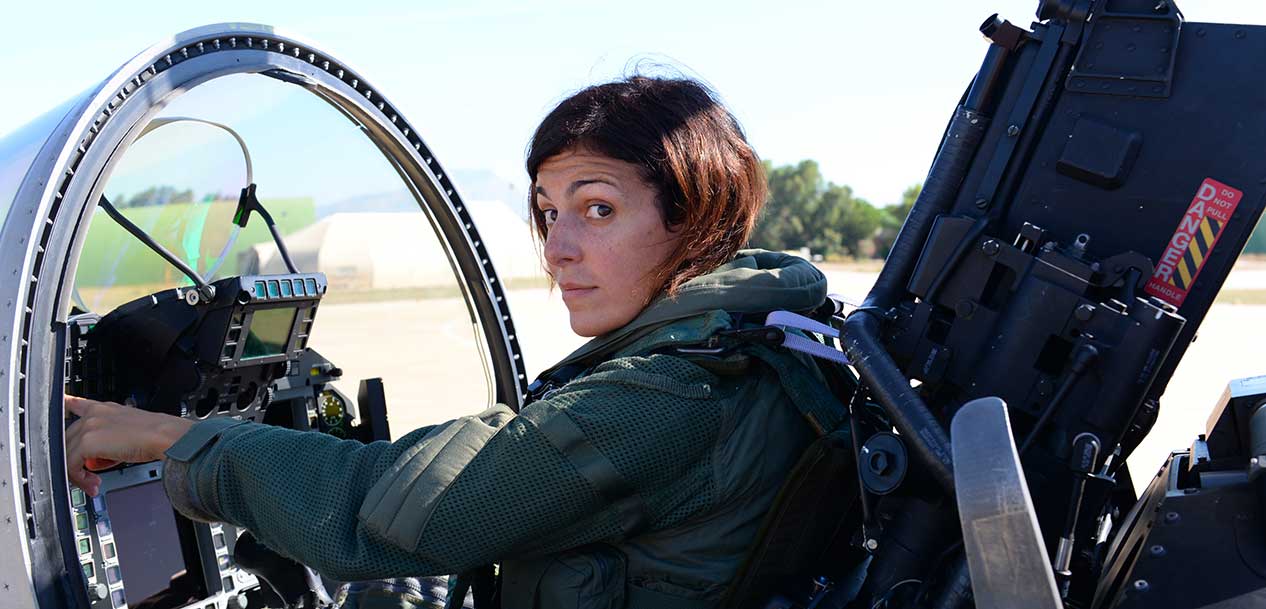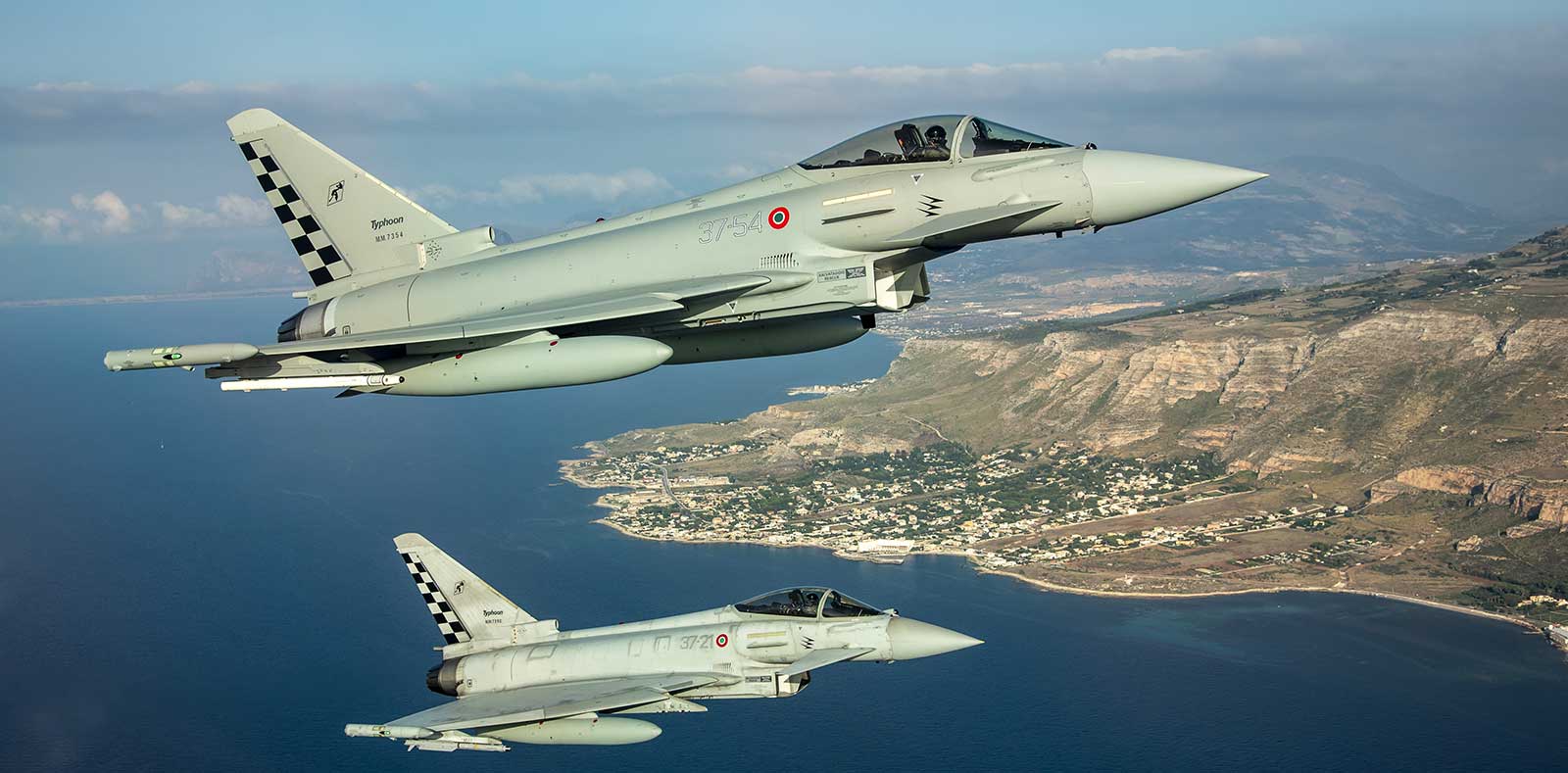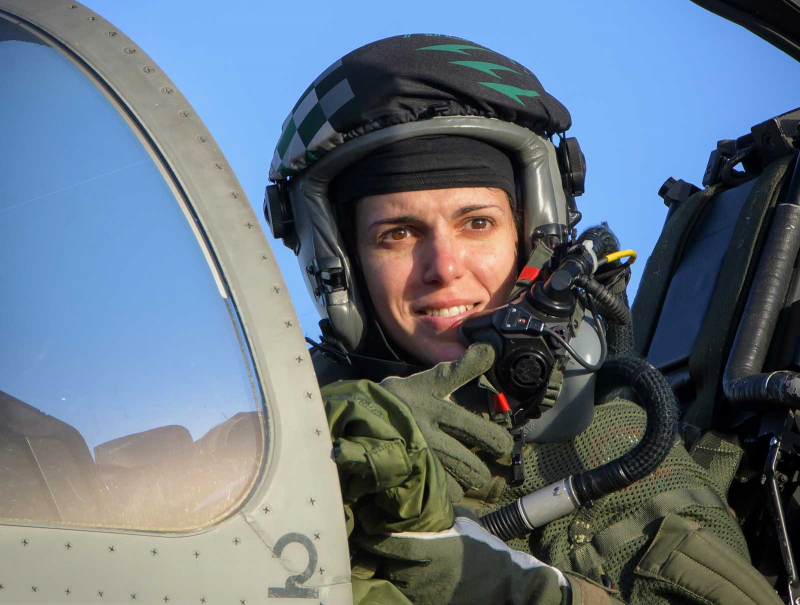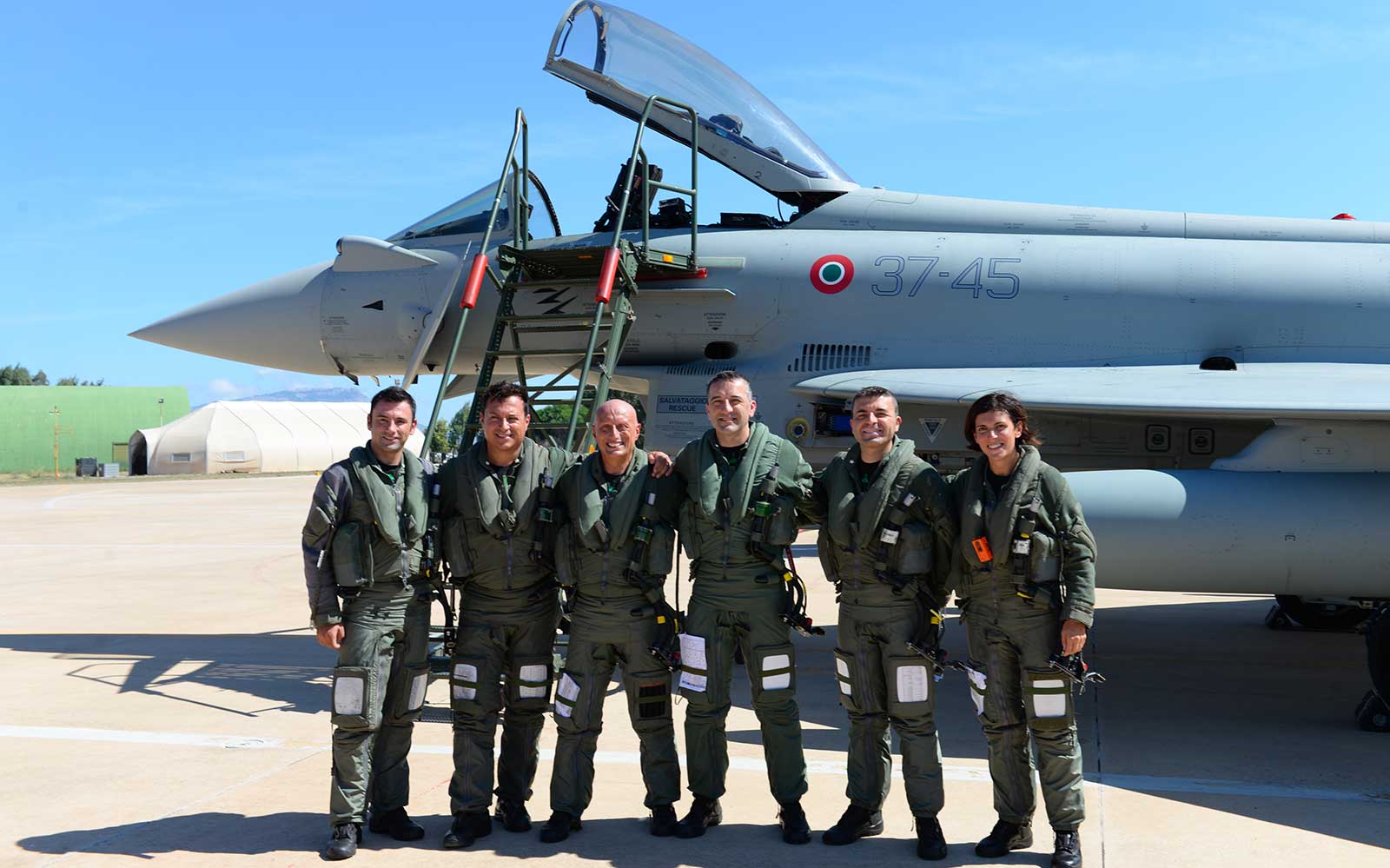Culture
A young girl's dream
The extraordinary story of the woman who flies the supersonic Typhoon fighter, whose engines are as legendary for aviators as they are for those who built it and still service its efficiency today.
Jul 2020
It seems just like yesterday, but it has already been twenty years since the first woman set foot - or perhaps it would be better to say - took to the skies with the Italian Air Force. Over this time, women's aspirations have come to the fore in a world that is certainly tough, but which brings a lot of satisfaction. Major Ilaria Ragona is an example of this; among the first female pilots of the Eurofighter Typhoon, one of the most advanced military aircraft, capable of reaching speeds of up to twice the speed of sound, with a specially developed engine – the EJ200 – many components of which carry the mark of Avio Aero.
“The thrust that the engines develop is impressive right from take-off with the afterburner: angles of ascent can be achieved that other aircraft can hardly reach,” according to the Italian woman pilot of the Typhoon, commenting on the function of one of the components designed and produced by Avio Aero at the Rivalta and Brindisi sites. Part of Eurojet consortium since its foundation, the Italian company is a service partner and responsible for more than 1/5 of this phenomenal engine, which has far exceeded one million hours of flight time and has the largest number of orders for a defense aircraft in the world.
But how do you get there? Are you born a pilot or do you become one? According to Major Ragona - born in Padua’s province in 1983 - it is something that comes from the depths of childhood: “since I was a child, when I saw military aircraft passing by, I always dreamed of doing this job. So I grew up with this goal, and finally after high school, I sat the entrance examinations for the Italian Air Force Academy, succeeding in 2002 with the Centauro V course.” From then on, Ilaria's life moved between flight school in Latina and university studies at the Academy in Pozzuoli (Naples). After graduating, her studies continued in the United States, Texas, at the ENJJPT (Euro-NATO Joint Jet Pilot Training) flight school, where she obtained her military pilot's license and was then assigned to the 4th Wing of Grosseto.
The encounter with the Eurofighter is pure passion: “I came to the Eurofighter after specific training with operational flight orientation courses at the 61st Wing of Lecce. I was then assigned first to the 20th Group, responsible for the initial operational conversion of the newly assigned pilots, then to the 9th Group. After a few years, I was transferred to the 37th Wing of Trapani, headquarters of the 18th Group. Piloting this kind of aircraft is a truly unique experience. Its performance is remarkable and the feeling at the controls of this aircraft is one of having highly advanced technology at your fingertips, which can compete with later generation platforms. What’s more, the multitude of on-board systems reduces the attention that the pilot has to devote to the basic handling of the aircraft, such as maintaining speed and altitude, which is managed by the flight control computers, allowing attention to be focused on the management of radar and other systems. Although I have flown on planes supplied to flight schools - such as the SF-260, T-37, T-38 and MB-339 - my working life is on this aircraft. I have done drills, real missions, and achieved important milestones in my professional career with this aircraft.”
"When it comes to male professions embraced by women, the emotional aspect dominates because of the nature of the profession, so the stereotype remains that this work is not for women. Even if this is not true"
Major Ragona’s days are marked by a lot of flying but also a lot of planning: “all of us pilots also have a job that requires us to spend time in the office. Flight missions, whether training or real, require serious preparation which, depending on the complexity, also starts several days earlier. And then you take off... The flight, however, doesn’t end on landing, afterwards there is what is called a debriefing: you analyze what you did during the mission so you can do it better next time. No flight is the same as another, so each time you learn something new.”
An everyday existence often experienced as the only woman in the formation, even if for Ilaria Ragona there are no differences. Her interpretation is not based on emotional considerations; on the contrary, she believes that “in general, when we talk about male professions embraced by women, the emotional aspect dominates because of the nature of the profession, so the stereotype remains that this work is not suitable for women. Even if this is not true. From my perspective, every person should be free to follow their aspirations, to realize their dreams, and to pursue their goals. Or at least try, regardless of gender.”
Cover and page images © Giovanni Colla ph. and are courtesy of Aeronautica Militare.







